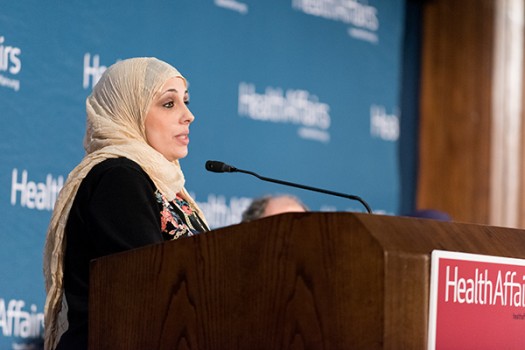You are looking at an archived version of our site. Please visit thepcc.org for a fresh, new experience!
You are here: Array » Patients as Consumers
Patients as Consumers
Today, more than ever, people are actively engaged in their health care decisions. While technology makes more information available to everyone, more is not always better, and misinformation can be particularly problematic in health care settings. Many other issues have stemmed from the imbalance of power between patient and physician. As access to patient records is changing, physicians are no longer the gatekeepers of medical knowledge. With access to all of this information and without proper knowledge, patients are at risk of great misunderstanding. Much of the information available to patients is in the form of qualitative patient narratives, which while appealing, can be misleading without the quantitative evidence to support them. It is becoming increasingly important for physicians to guide patients to useful tools and resources and be responsible stewards of patient-generated data.
Patients, as consumers, should be more empowered to promote patient-centered care and improve outcomes. However, health care is not like other consumer sectors so reducing costs and improving quality cannot be the responsibility or burden of patients alone. We have to be careful when thinking of patients as consumers because health care is unlike other industries. Medical professionals cannot treat patients like other consumers and give non-indicated care. Additionally, the customer is not always right when requesting certain treatments.
There are several concerns about how we look at consumerism in health care because it does not have the same infrastructure as other industries, for example with price transparency. The typical principles of consumerism cannot be applied to health care because there is a lack of power and choice. Additionally, health care lacks the same accountability you can find in other sectors, which have continuous feedback to measure consumer experience while health care is only just beginning to engage patients. It would be more beneficial to look at patients as partners rather than as consumers to acknowledge the active role they have in the relationship.
Next steps for achieving this include involving all stakeholders in the building of this infrastructure, adapting to meeting people where they are when they need help, and having two-way patient portals. Part of empowering people is giving them access to all of the information they need to move forward and using tools that support shared decision-making. Physicians should lend their expert knowledge to the decision-making process and activate and coach patients. It will be important to understand patients’ values and how they will use this information when making these changes.
Related Content:
Recent News
August 16, 2024
August 12, 2024
July 16, 2024
May webinar highlights: “The Commercial Market: Alternative Payment Models for Primary Care” Nate Murray explains w… https://t.co/KX9Wi2w6oY —
2 years 5 months ago
@CMSinnovates’ primary care strategy is rooted in a 2021 @theNASEM’s report which called #primarycare “foundational… https://t.co/glbPxvCysg —
2 years 5 months ago
@CMSinnovates has a new #primarycare strategy, envisioning “ACO-based primary care model tests that may focus on pr… https://t.co/aJGF1z411l —
2 years 5 months ago
- Page 1
- ››
Secondary menu
Copyright © 2024 Primary Care Collaborative




